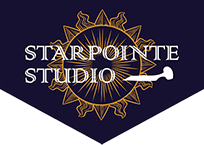On Saturday, Aug. 11, Joanne Price (that’s me), will present a demonstration of wood engraving from 10:30 a.m. to 3:30 p.m. at the Kentucky Artisan Center at Berea. It appears this will be the first time wood engraving will be demonstrated at the Center. Wood engraving is a relief printmaking medium, like stamps, woodcuts, letterpress, or linoleum cuts. Wood engravings produce images with fine details while retaining the bold relief characteristics of woodcut and linoleum. This process is perfect for adding illustrations to books, broadsides, greeting cards, or to create a unique piece of art.
“For me, wood engraving’s intimate scale and slow pace provide a welcome respite from our cyber-fast world. The tactile nature and physicality of the relief printmaking process is satisfying. The strokes of my tools reveal the light, with the image slowly emerging from a darkened surface. It is charmingly mysterious and feeds my need for quiet concentration and hands-on creative productivity.” – Joanne Price
Wood Engraving (also known as Xylography) was developed in the late 18th century by Thomas Bewick (1753–1828), an artist and naturalist in Northern England. Bewick made his living doing commercial graphic design work, much like modern day designers do – making ads, business cards and logos combining image and text. Bewick engraved both cooper and wood, but excelled in the latter. From the 1830s – early 1900s, wood engravings dominated illustration in newspapers, magazines, and in books with demand for increased edition sizes. The demands of the Industrial Revolution created a medium that could be as detailed as copper engraving, able to withstand thousands of impressions and could be printed at the same time as the text. This reduced the printing time, labor, and cost of illustrating text.
Once photographic techniques gained a broader foothold in workshops, the creative engraver in commercial realms declined, but the relief medium as an art form truly blossomed in the early 1900s.
Come discover this medium, steeped in its history, utilized in a computer age, with me!
I’ll show you how I cut my original drawings into endgrain wood. I will demonstrate how I ink and print my wood blocks. I’ll also talk about the history, the tools and materials, as well as contemporary resources and examples.
Price is nationally known for her wood engravings and is president of the Wood Engravers Network, an organization that fosters education and creates a resource for wood engravers. She has led wood engraving workshops throughout the country, has exhibited widely and teaches printmaking at the University of Kentucky.









